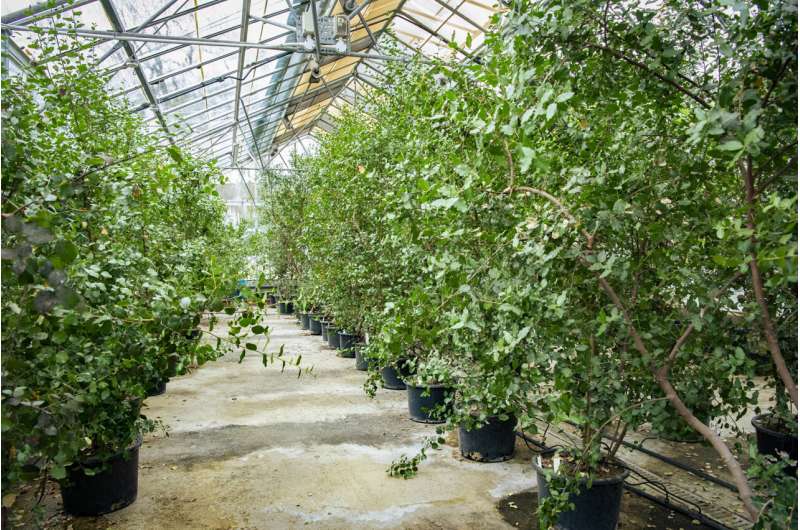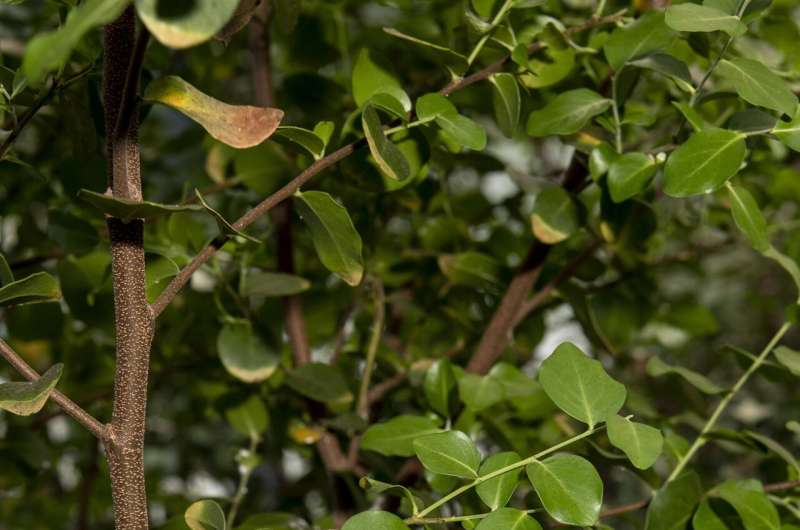This article has been reviewed according to Science X's editorial process and policies. Editors have highlighted the following attributes while ensuring the content's credibility:
fact-checked
peer-reviewed publication
trusted source
proofread
Can insights from the soapbark tree change the way we make vaccines?

The medicinal secrets of the Chilean soapbark tree have been laid bare, unlocking a future of more potent, affordable, and sustainably sought vaccines.
The evergreen species Quillaja saponaria has, for decades, been highly prized for producing molecules called QS saponins, which are used in the food and drinks industry as foaming agents.
More recently an important new function has emerged with saponins obtained from the tree's bark used as potent adjuvants in the production of vaccines. Adjuvants play a critical role in some vaccines, working to boost the potency of a vaccine by enhancing the host immune response.
Molecules extracted from soapbark tree are used as adjuvants in vaccines protecting people against COVID-19, shingles, and malaria.
QS saponins are sourced directly from the tree and although this is at a much smaller scale than the food and drink industry, vaccine manufacturers are actively working to reduce the environmental impact and improve sustainability of sourcing these important resources.
Researchers at the John Innes Centre have taken a major step forward in addressing this problem, by using a combination of genome mining and bioengineering techniques to produce saponin-based vaccine adjuvants in the laboratory without harvesting material directly from trees.
Dr. James Reed, first author of the study and postdoctoral researcher at the John Innes Centre says, "These are complex molecules that have thwarted attempts to synthesize them at scale using chemistry in the lab. After many twists and turns, we have now discovered the core set of genes responsible for the biosynthesis of QS saponins."
In research which appears in Science, the Osbourn group at the John Innes Centre first sequenced the genome of Quillaja saponaria. Then they used powerful computational gene-mining tools to predict which among the ~30,000 genes that make up its genome were responsible for saponin biosynthesis.
This led to the identification of a biosynthetic pathway of 16 genes which together produce the enzymes which are nature's building blocks for saponin production. Together these newly discovered genes and enzymes act as an instruction manual for future adjuvant bioengineering, say the team.
Identification of a further three enzymes resulted in a complete biosynthetic pathway to the saponin QS-7, a saponin that is included in a vaccine adjuvant with proven clinical efficacy, but that is notoriously difficult to purify from soapbark tree.
The pathway to these molecules was reconstructed in a plant called Nicotiana benthamiana, using a rapid and powerful technique called transient combinatorial expression.

This dwarf wild relative of tobacco is well known as an amenable host for the bioproduction of therapeutic proteins and pharmaceuticals.
The team is already using this instruction manual to attempt to produce other valuable saponins including QS-21, a potent adjuvant and key component in human vaccines.
The levels of saponins produced in this study equate to amounts normally obtained from the leaves of the soapbark tree rather than its bark.
The team have partnered with Plant Bioscience Limited (PBL, Norwich UK), who are leading on the commercialization of the research and are now looking to work with commercial and academic partners to scale up these quantities further.
Professor Anne Osbourn, the lead of the study, and a group leader at the John Innes Centre said, "The COVID-19 pandemic has demonstrated the huge demand for lifesaving vaccines. By assembling the genome sequence of Quillaja saponaria we now have the instruction manual which has enabled us to decode how the tree makes these potent medicinal molecules. This opens the possibility of producing known and new-to-nature saponin-based vaccine adjuvants optimized for immunostimulant activity and suitable for human applications in our rapid transient plant expression system."
More information: James Reed et al, Elucidation of the pathway for biosynthesis of saponin adjuvants from the soapbark tree, Science (2023). DOI: 10.1126/science.adf3727. www.science.org/doi/10.1126/science.adf3727
Journal information: Science
Provided by John Innes Centre



















